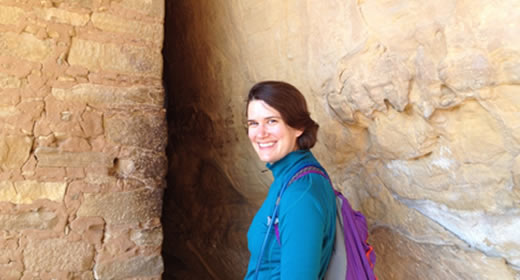
For me, there is no greater respite than exploring nature. Directly upon moving to Michigan, I began hatching plans to visit one of our nation’s least visited national parks, Isle Royale. I envisioned this summer culminating with a vacation to that rocky island in the icy waters of Lake Superior, after working at an internship in an urban environment. Instead, my summer took an unpredictable path: the National Park Service welcomed me not as a visitor, but as an intern.
Review more internship field reports from Ford School students serving organizations around the world.
Through the 1916 Organic Act, the American people created what some hail as our greatest idea: the National Park Service (NPS). In this enabling legislation, the NPS was charged to “conserve the scenery and the natural and historic objects and the wild life therein and to provide for the enjoyment of the same in such manner and by such means as will leave them unimpaired for the enjoyment of future generations.” Today, NPS manages over 400 units and 84 million acres of land that embody both our natural and cultural heritage.
Embedded in its mission are two distinct and often conflicting goals: facilitating the public’s enjoyment and use of these units while simultaneously preserving their features unimpaired. National parks across the country are working to strike this balance every day. Mesa Verde National Park (MVNP), where I am living and working this summer, is no exception.
Square Tower House Cliff Dwelling, Mesa Verde National ParkMVNP got its start before the NPS was established with the passage of the American Antiquities Act of 1906. MVNP was uniquely founded to preserve the remnants of the elaborate Ancestral Puebloan communities that thrived on the Colorado Plateau between A.D 550 and A.D. 1200. The park’s rich and significant cultural resources were embraced by the international community when it became the United State’s first World Heritage Site. Over the park’s lifetime, over 4,000 archeological sites have been documented. Chief among these are the park’s cliff dwellings, which have captured the public’s imagination for generations and come to symbolize the ingenuity and resilience of the people who called these lands their home. In order to safeguard these critical cultural resources, MVNP, whose natural wonders were later recognized and protected by the public, manages one of the few national wilderness areas that are closed to the public.
From its archeology sites, over 3 million artifacts were recovered. This material record, including fabrics, pottery, foodstuffs, and flora, continues to provide irreplaceable insight into the cultural world of the Ancestral Puebloans. Upon recovery, the park is responsible for preserving these artifacts and facilitating their research to improve our understanding of the park’s prehistoric landscape. In 2012, MVNP made great strides toward this goal by inventorying and consolidating its entire artifact collection into a conveniently located, state-of-the-art storage and research facility inside its new Visitor and Research Center.
Hummingbird Monitoring Project, Research Study at Mesa Verde National ParkMy internship, through the Business Management Group (BMG) at NPS, brought me to MVNP to identify ways the park can capitalize on this new center to advance research within the park. Each year the BMG sends 16 interns to 8 parks to craft business plans that address strategic opportunities. At MVNP, we were asked to develop strategies to more broadly promote the cultural and natural research conducted in the park, and to better integrate these activities and findings into the park’s interpretive services. We were also charged with finding operational efficiencies so the research center can expand its reach and achieve more, despite declining federal budgets.
Each day, the splendor and challenges of the park’s resources and its management renews my spirit and tests my creativity. I feel proud to have worked with the NPS to preserve and inspire our next generation of park stewards, and I am excited to have uncovered another path and new horizons in my career.
Cassandra Baxter is a 2015 Dow Sustainability Fellow.
